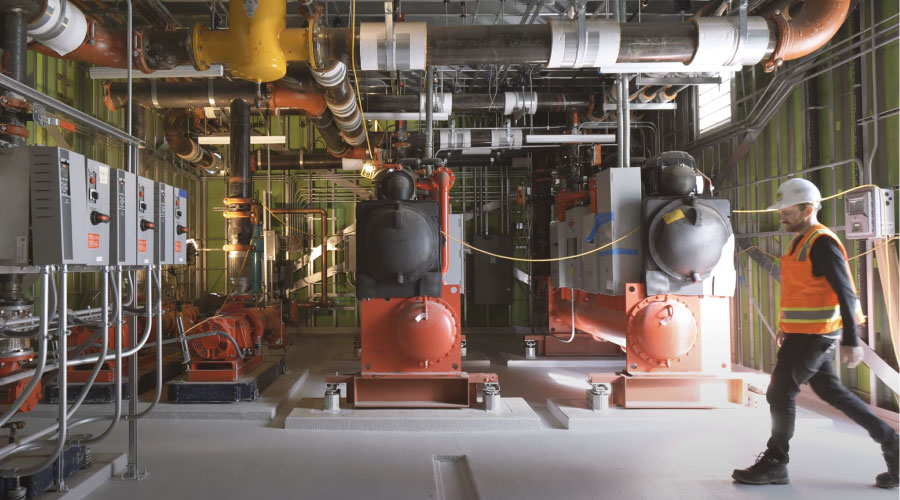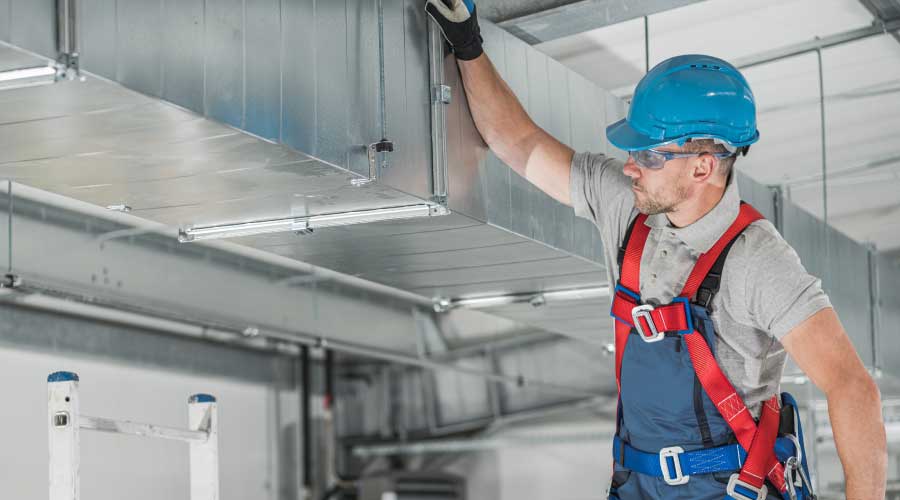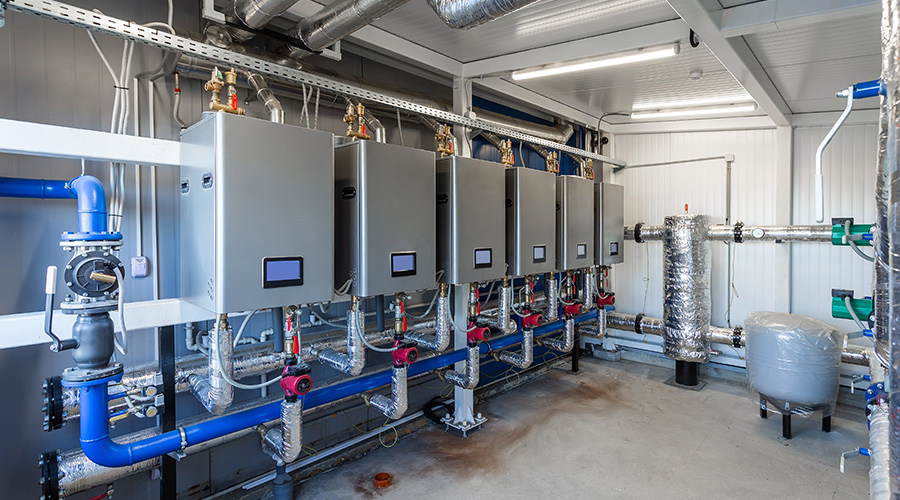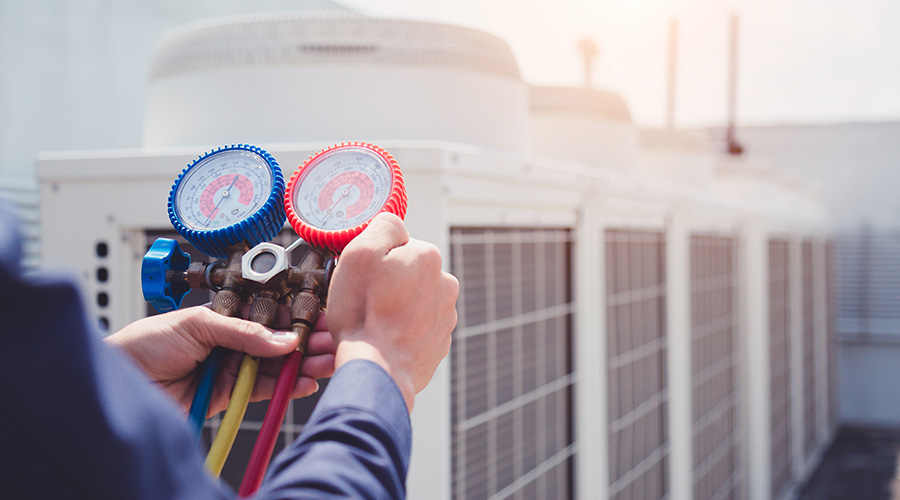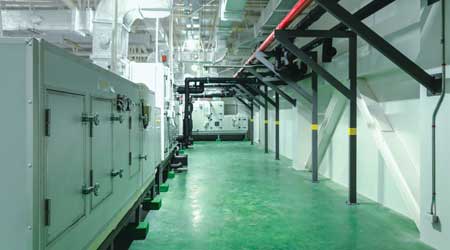 Consider maintenance, both routine and diagnostic, as well as potential repairs when choosing a location for equipment. Make sure there will be enough space to easily maneuver and allow for system expansion if needed in the future.
Consider maintenance, both routine and diagnostic, as well as potential repairs when choosing a location for equipment. Make sure there will be enough space to easily maneuver and allow for system expansion if needed in the future.The Who, What, and Why of Replacing Aging Cooling Systems
A cooling system upgrade must be well-thought-out and executed properly to carry a building for the next 25 years.
The average age of a commercial building in the United States is 49.83 years. Because cooling equipment lasts up to 25 years, the average building will get a cooling system replacement at least once and probably twice in its lifetime.
A significant capital expense that also affects building occupants and day-to-day operations and performance, a cooling systems upgrade must be well thought out and executed to carry a building for its next quarter-century. Here’s what facility managers need to know for designing successful cooling and other HVAC systems for any commercial space.
Why
Although everyone is busier than ever these days, it’s important to take time at the onset of design to truly understand any cooling system problem. Contrary to popular belief, the biggest performance piece in the building isn’t the equipment, it’s the people. Taking time to understand the HVAC issues from the occupant’s perspective is the why of the project. Going beyond “I want the building to be hot/cold when it’s supposed to be” to “What are the building owners looking to achieve?” is critical to arriving at the best solution for the facility.
There’s a false assumption that every building has the same problems and needs the latest and greatest equipment to perform optimally. This is far from the truth. Consider the following questions when determining just what a facility needs when it comes to the design of cooling and other HVAC systems:
• How do your annual utility/operating costs compare to market? The answer to this question will inform whether or not the latest and greatest, high-efficiency equipment is necessary. Once the system has met the energy code, look at the latest and greatest from a big picture perspective, including financial. If your annual utility and operating costs are significantly higher than competing buildings, then it is appropriate to invest in additional efficiency to help bring costs down, making the facility more attractive and competitive.
• What are your maintenance/engineering costs, relative to other properties? Are these costs justified with the level of service received? How much time and money are being spent reacting to crises with repair work? Are you receiving an abnormal amount of calls on the HVAC system?
• How much facilities/maintenance staff do you have on board? It’s not uncommon for a large class A building to employ a number of operating engineers. But, as the building ages, and the systems become less reliable, those engineering hours and overtime begin to add up to more than a full time equivalent. It’s also important to understand the capability of your team. Some of the outdated technology in today’s buildings is not discussed or taught in vocational training programs. And some newer buildings are run exclusively with digital technology. Match the right people to the right problems.
• Are preventive maintenance costs going up? Are you expending too much on repair work, including outside contractors that are both expensive and disruptive to tenants? If you’re constantly dealing with fire drills and panic alarms, your MEP system design is no longer effective.
• What is the realistic market expectation of quality for your facility? Oftentimes there’s a mismatch between Class A and Class B commercial building tenants and their HVAC systems. Know your building tenants and understand their expectations. Be realistic about your real estate assets. Class A tenants will expect Class A HVAC. Class B tenants will appreciate Class A HVAC, but won’t expect it. It can become a real problem when Class A tenants have a Class B system.
What
There’s no single best way to cool a facility — or to heat or ventilate it, for that matter. Solutions have to be evaluated on a range of factors: how beneficial they are to your needs, how much they cost, how long phasing or installation will take, what building modifications or tenant disruptions will be required, or what operating or maintenance costs are likely to be.
Make sure the what — that is, the ultimate equipment/systems recommendation — is in line with your initial complaints/issues about the current system, responds to the observations uncovered during the analysis phase of the MEP design, and meets your in-house resources and tenants where they are.
Cooling and other HVAC systems follow the law of diminishing returns. You don’t need too expensive, too cheap, highest or lowest performing. Instead, like Goldilocks, look for what’s just right for you. Something that’s more expensive may only be marginally more efficient. The exception: A highly sophisticated process-driven operation. Otherwise, you generally don’t need the top-of-the-line HVAC equipment to operate at, or better than, market. Consider whether there are less expensive options that will perform equally well for you.
Generally speaking, most building problems aren’t exclusively solved with software. As much as 99 percent of the time, software isn’t the issue. Performance can certainly improve with the right software, but the biggest performance improvement will come from having the right people and the right equipment and controlling it all correctly. Technology plays a role in the high-performance, 21st century facility, but it’s another tool in the tool box, not the tool box itself.
Who
Things never break when it’s convenient. This is a fact of life that typically translates to a lot of pressure on the building owner or asset manager when something goes awry. The old system has to be replaced, or a new one has to be built — and it needs to happen quickly.
But don’t just replace in kind. A building program and current cooling systems analysis can inform the myriad of potential options. Each will have its own benefits and drawbacks specific to the building, its occupants, and facilities personnel.
Before deciding what to do, decide who to do it with. Find a disinterested third party to lay out all the options before spending lots on mechanical and electrical equipment. Exercise caution when engaging a company that sells or installs equipment, as their interest will lie only in new equipment.
A word-of-mouth recommendation is always most valuable. Ask around, find out who has been happy with whom. Talk to the firm’s references before hiring them. Take the time to ask the real questions, as this decision will cost you millions of dollars and the result will hopefully last for the next quarter century.
Related Topics:










